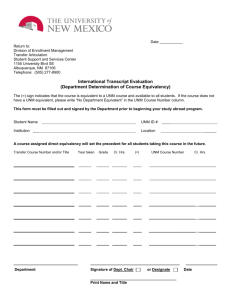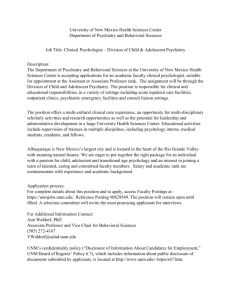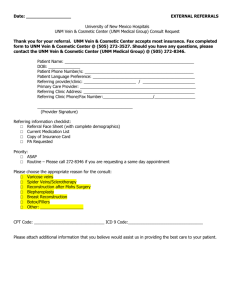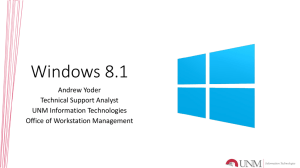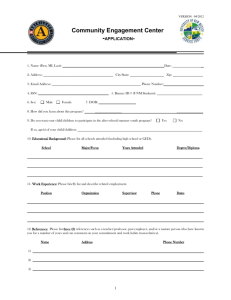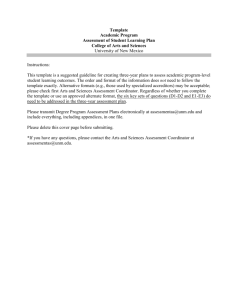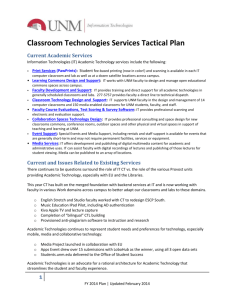328-syll
advertisement
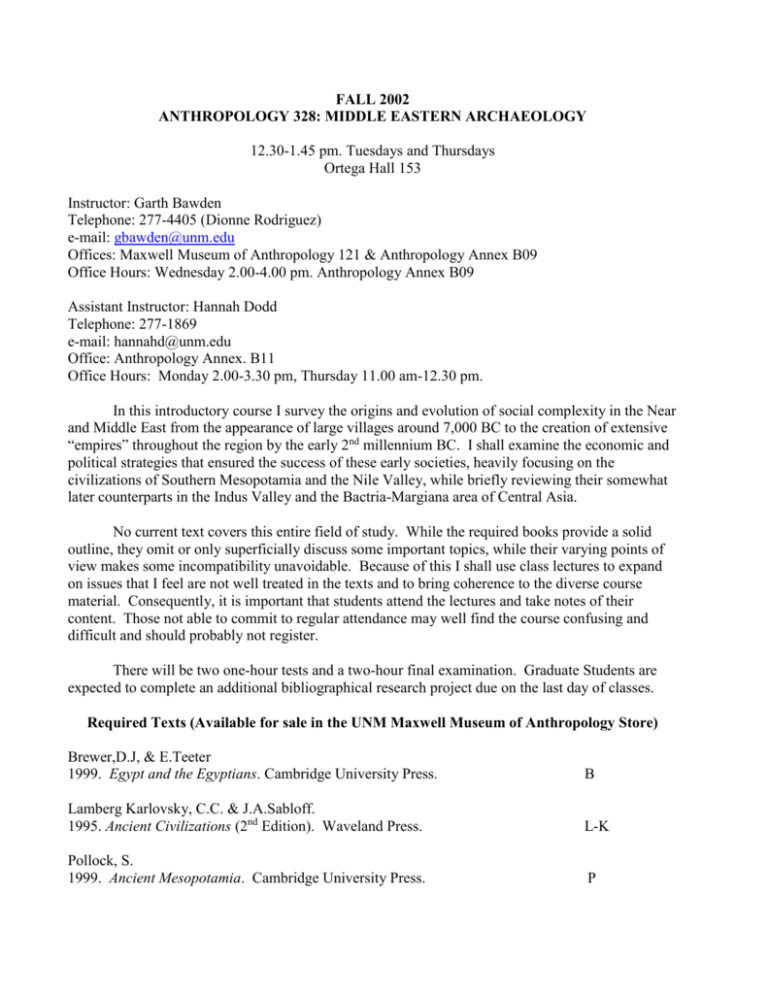
FALL 2002 ANTHROPOLOGY 328: MIDDLE EASTERN ARCHAEOLOGY 12.30-1.45 pm. Tuesdays and Thursdays Ortega Hall 153 Instructor: Garth Bawden Telephone: 277-4405 (Dionne Rodriguez) e-mail: gbawden@unm.edu Offices: Maxwell Museum of Anthropology 121 & Anthropology Annex B09 Office Hours: Wednesday 2.00-4.00 pm. Anthropology Annex B09 Assistant Instructor: Hannah Dodd Telephone: 277-1869 e-mail: hannahd@unm.edu Office: Anthropology Annex. B11 Office Hours: Monday 2.00-3.30 pm, Thursday 11.00 am-12.30 pm. In this introductory course I survey the origins and evolution of social complexity in the Near and Middle East from the appearance of large villages around 7,000 BC to the creation of extensive “empires” throughout the region by the early 2nd millennium BC. I shall examine the economic and political strategies that ensured the success of these early societies, heavily focusing on the civilizations of Southern Mesopotamia and the Nile Valley, while briefly reviewing their somewhat later counterparts in the Indus Valley and the Bactria-Margiana area of Central Asia. No current text covers this entire field of study. While the required books provide a solid outline, they omit or only superficially discuss some important topics, while their varying points of view makes some incompatibility unavoidable. Because of this I shall use class lectures to expand on issues that I feel are not well treated in the texts and to bring coherence to the diverse course material. Consequently, it is important that students attend the lectures and take notes of their content. Those not able to commit to regular attendance may well find the course confusing and difficult and should probably not register. There will be two one-hour tests and a two-hour final examination. Graduate Students are expected to complete an additional bibliographical research project due on the last day of classes. Required Texts (Available for sale in the UNM Maxwell Museum of Anthropology Store) Brewer,D.J, & E.Teeter 1999. Egypt and the Egyptians. Cambridge University Press. B Lamberg Karlovsky, C.C. & J.A.Sabloff. 1995. Ancient Civilizations (2nd Edition). Waveland Press. L-K Pollock, S. 1999. Ancient Mesopotamia. Cambridge University Press. P Class Schedule Section 1: Introduction August 20. General Introduction. 22. Physical Environment. http://www.unm.edu/~gbawden/328-envi/328-envi.htm 27. History. http://www.unm.edu/~gbawden/328-hist/328-hist.htm Readings for this section Brewer and Teeter: Chapters 1 and 2. Lamberg-Karlovsky and Sabloff: Chapter 1. Pollock: Chapters 1 and 2. Section 2: Origins of Middle Eastern Civilization 29. Early Neolithic. http://www.unm.edu/~gbawden/328-theory/328-theory.htm http://www.unm.edu/~gbawden/328-neo1/328-neo1.htm September 3. Mature Neolithic: Jericho and Catal Huyuk http://www.unm.edu/~gbawden/328-neo2/328-neo2.htm 5. Origins of Sumerian Civilization I: Umm Dabaghiya, Hassuna, Halaf http://www.unm.edu/~gbawden/328-neo3/328-neo3.htm 10. Origins of Sumerian Civilization II: Samarra, Ubaid. http://www.unm.edu/~gbawden/328-neo3/328-neo3.htm Readings for this section Lamberg-Karlovsky and Sabloff: Chapter 2. Pollock: Chapter 4 (pages 78-92). 12. First One-hour Test Section 3: Southern Mesopotamian Civilization 17. Historic and Geographic Overview. (L-K.pp.139-181; P. Chapters 1-2). http://www.unm.edu/~gbawden/328-sumhist/328-sumhist.htm 19. Settlement Patterns and Urbanism. (P. Chapter 3). http://www.unm.edu/~gbawden/328-urb/328-urb.htm 24 Uruk Origins: The Uruk and Proto-Elamite Expansion. (L-K.pp.139-159). http://www.unm.edu/~gbawden/328-exp/328-exp.htm 26. Southern Mesopotiam Economic Structure: Tribute,Oikos and Palace Economies (L-K. pp.174181; P.4-5). http://www.unm.edu/~gbawden/328-econ/328-econ.htm October 1. Bureaucracy, Ownership and Writing. (P.Chapter 6). http://www.unm.edu/~gbawden/328-write/328-write.htm 3. Religious and Political Ideology I: Geopolitical factors. The Temple/Palace dichotomy. (L-K.pp. 174-181; P.Chapter .7). . http://www.unm.edu/~gbawden/328-rel/328-rel.htm 8. Religious and Political Ideology: II: The Nature of Kingship (P. Chapter 7). http://www.unm.edu/~gbawden/328-rel/328-rel.htm http://www.unm.edu/~gbawden/328-tempal/328-tempal.htm Readings for this section Lamberg-Karlovsky and Sabloff: Chapter 3 (pages 117-121, 139-191). Pollock: Review Chapters 1 and 2. Read Chapters 3 to 9. 10. Mid Term Break 15. No Class Section 4: Civilizations of Central Asia and the Indus 17. Indus Valley I http://www.unm.edu/~gbawden/328-ind1/328-ind1.htm 22. Indus Valley II. http://www.unm.edu/~gbawden/328-ind2/328-ind2.htm 24. Central Asia/Oxus/Bactria-Margiana Archaeological Complex http://www.unm.edu/~gbawden/328-cenAsia/328-cenAsia.htm 29. Regional Trading Interaction Networks. http://www.unm.edu/~gbawden/328-for/328-for.htm 31. Subsequent History of the Middle Eastern Civilizations. http://www.unm.edu/~gbawden/328-coll/328-coll.htm Readings for this section Lamberg-Karlovsky and Sabloff: Chapter 3 (pages 181-232). November 5. Second One-hour Test Section 5: Origins of Nile Valley Civilization 7. Natural Setting and overview of Egyptian Civilization. http://www.unm.edu/~gbawden/328-egchronol/328-egchronol.htm http://www.unm.edu/~gbawden/328-egpre1/328-egpre1.htm 12. Upper Nile Valley and Predynastic Origins. http://www.unm.edu/~gbawden/328-egpre2/328-egpre2.htm 14. Creation of Pharaonic Egypt: The Unification. http://www.unm.edu/~gbawden/328-egpre3/328-egpre3.htm Readings for this section Lamberg-Karlovsky and Sabloff: Chapter 3 (pages 121-138). Brewer and Teeter: Chapters 1-3. Section 6: Pharaonic Egyptian Civilization 19. The Local Roots of Egyptian State Ideology (B. Chapters 8,10,11). http://www.unm.edu/~gbawden/328-egking1/328-egking1.htm 1. Divine Kingship. Religious Roots of State Ideology. (B. Chapter 6). Heliopolis/Mephite Theology/Amun http://www.unm.edu/~gbawden/328-egking2/328-egking2.htm 26. Architecture and Rituals of Divine Kingship. (B. Chapter 9). http://www.unm.edu/~gbawden/328-egking3/328-egking3.htm 28. Thanksgiving: No Class December 3. Settlement and Urbanism. (B. Chapter 4) http://www.unm.edu/~gbawden/328-egurb/328-egurb.htm 5. State and Private Economic Domains: (B. Chapters 5,7). http://www.unm.edu/~gbawden/328-egecon/328-egecon.htm 10. Foreign Relations (B. Chapter 3) http://www.unm.edu/~gbawden/328-egfor/328-egfor.htm Readings for this section Brewer and Teeter: Chapters 4-12 12. Final Exam (10.00 am-12.00 pm.)
